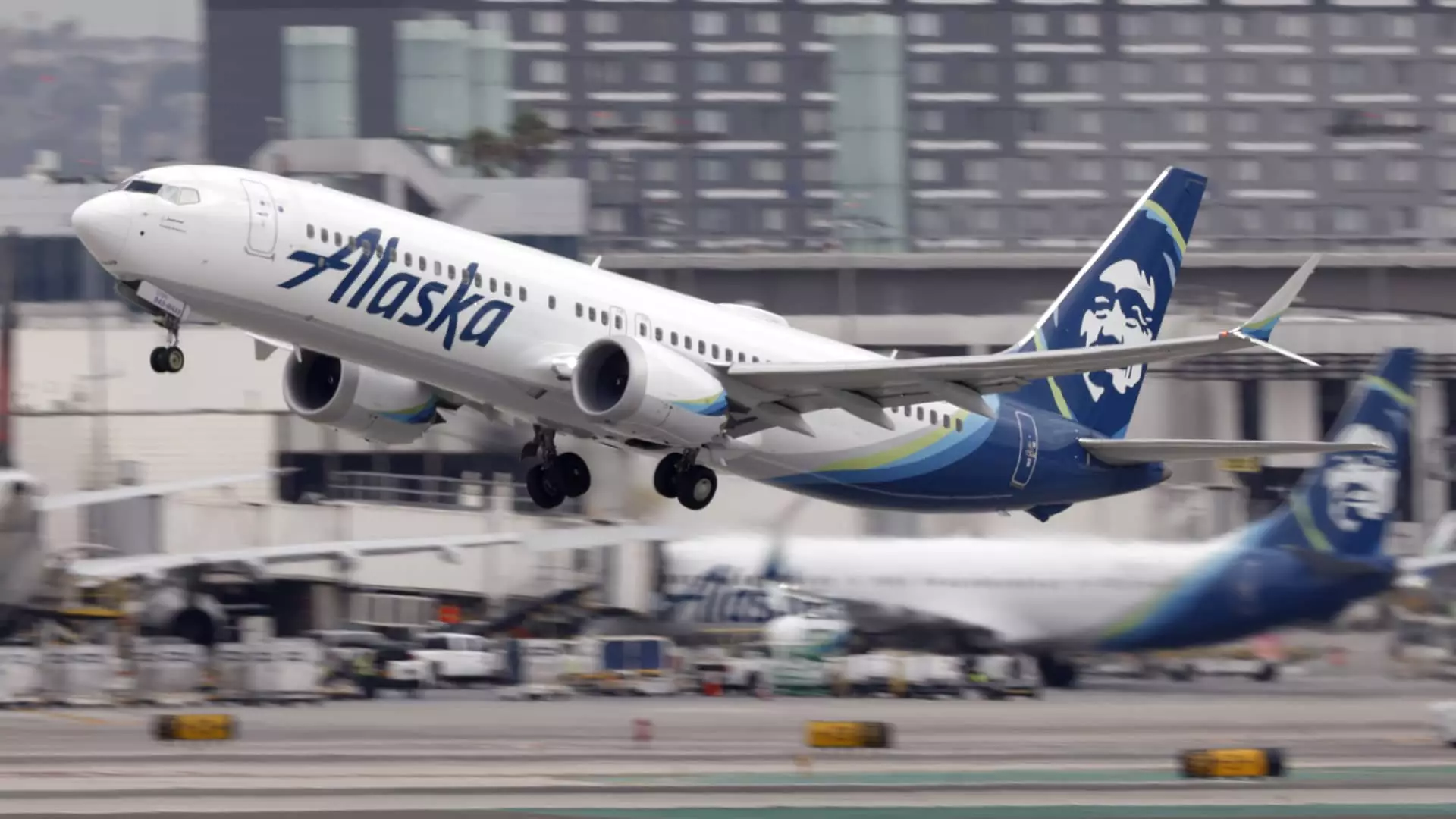Alaska Airlines is making a decisive push into the high-end travel market, boldly expanding its loyalty offerings to attract the most lucrative travelers. With the launch of the Atmos Rewards program—an integrated effort with Hawaiian Airlines—this move signifies a strategic shift toward exclusivity and premium experiences. While many carriers merely tinker at the edges of loyalty programs, Alaska’s approach suggests a serious intent to establish dominance among high-spending travelers who seek not just flights but a comprehensive luxurious experience from check-in to arrival. The introduction of the Atmos Rewards Summit Visa Infinite card, priced at $395 annually, is not just a product but a statement: Alaska is carving out its space in the upper echelon of airline premium services.
This is a rare recognition that in a matured airline market, the battle for premium customers is more fierce than ever. Airlines are no longer satisfied with offering incremental perks; they want to lock travelers into a loyalty ecosystem that is difficult to exit. Alaska’s emphasis on a multi-structured earning system, allowing travelers to accrue points based on miles flown, dollars spent, or flight segments, demonstrates a nuanced understanding of different traveler behaviors. It’s an acknowledgment that loyalty isn’t a one-size-fits-all concept but a complex, personalized experience. It reflects a desire not just for revenue but for deep customer engagement, enticing high-value clients with tailored incentives.
Strategic Differentiation in a Crowded Marketplace
What really sets Alaska apart is its effort to maintain an aura of exclusivity. As airlines face the dangerous trap of overcrowded lounges and diminishing benefits—especially in the premium cabin segment—Alaska is attempting to buck this trend. By offering eight lounge passes annually for its top Visa Infinite card, travelers are assuredly granted curated, high-quality access rather than facing overcrowding and long lines. This kind of resource allocation highlights the airline’s focus on protecting the sanctity of its premium spaces, which is increasingly rare in an industry struggling to balance demand and capacity.
Moreover, Alaska’s plan to establish dedicated international lounges at key hubs like Seattle and San Diego illustrates a commitment to supporting long-haul, international travelers who expect a certain level of comfort and exclusivity. In an era where lounges are often overrun, this move underscores the airline’s understanding that luxury must be preserved to retain high-value customers. It signals to the affluent flyer that Alaska is not just chasing volume but prioritizing quality, which is a powerful differentiator in a commoditized industry.
Changing Tiers, Higher Expectations
The airline’s recalibration of elite tiers—raising the points required for top statuses—is both a challenge and an opportunity. While critics might perceive this as a devaluation, Alaska justifies the increase by emphasizing its commitment to meaningful rewards rather than superficial status symbols. The move pushes travelers to earn more through their flying habits, nudging high-value customers toward more frequent or higher-spend journeys that reinforce loyalty and revenue. The fact that the airline states miles aren’t being devalued for redemptions reflects an awareness of consumer skepticism; it’s a delicate dance of balancing perceived value against the need for airline profitability.
This recalibration aligns with industry trends, where competitors also increase thresholds, signaling a consolidation of the market’s premium segment. The emphasis on short-haul and premium cabin flying, combined with tiered benefits such as upgrades to premium cabins, indicates Alaska’s recognition that different customer types seek different incentives. The challenge remains: will these more demanding thresholds motivate customers to increase their loyalty, or will it push some away? Alaska seems confident that its focus on high-value experiences and curated perks will tip the scales in its favor.
Market Dynamics and Industry Aspirations
Despite the pandemic’s upheaval, airlines like Alaska understand that the appetite for luxury persists, especially among business travelers and high-net-worth individuals. This awareness is evidenced by their investments in enhanced services like Starlink Wi-Fi—an amenity that transforms in-flight connectivity into a seamless luxury feature—and their efforts to preserve cabin exclusivity. When JetBlue, a social competitor, is launching a $499 premium card and touting ambitious acquisition targets, Alaska’s aggressive strategy suggests it aims to stay at the forefront of premium loyalty programs.
The airline’s foray into international routes on wide-body aircraft from Seattle not only broadens its network but also signals ambitions to become a serious contender in the transpacific market. This strategic pivot is essential if Alaska hopes to attract high-end business clientele who prioritize both comfort and connectivity, and it complements their evolving loyalty ecosystem. The move to incorporate SpaceX’s Starlink services—offering complimentary Wi-Fi for loyalty members—embodies a broader vision of transforming the flight experience into something akin to a connected, luxury suite in the sky.
Final Thoughts: A Calculated Play for Premium Domination
Alaska Airlines’ latest initiatives reflect a bold, strategic gamble—to position itself as a premium, exclusive carrier that caters to the very top tier of travelers. Its differentiated loyalty program, combined with high-touch services and infrastructure investments, contradicts the industry norm of diluting perks at the expense of profitability. Instead, Alaska appears committed to creating a loyalty ecosystem that is both aspirational and attainable, deliberately designed to align with the demanding expectations of high-end travelers.
In a landscape where many airlines are content with incremental improvements, Alaska’s comprehensive approach signals an aspiration to define a new standard of luxury in domestic and international flying. Whether this is enough to outpace giants like Delta, American, and the emerging low-cost premium contenders remains to be seen. Nonetheless, Alaska’s gamble is unmistakably ambitious—an audacious bid to dominate a niche that increasingly values personalized, premium treatment over mere affordability. In the long run, this may well solidify the airline’s reputation not just as a carrier but as a purveyor of elevated experiences in the sky.


Leave a Reply